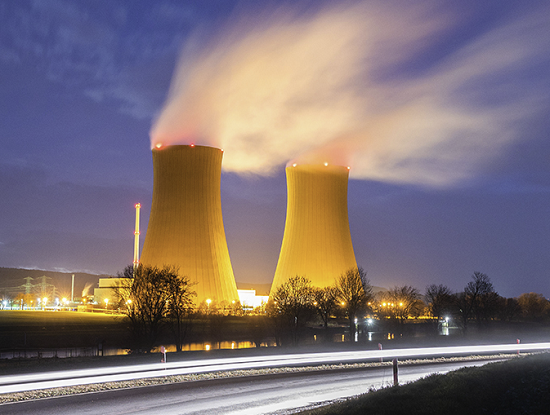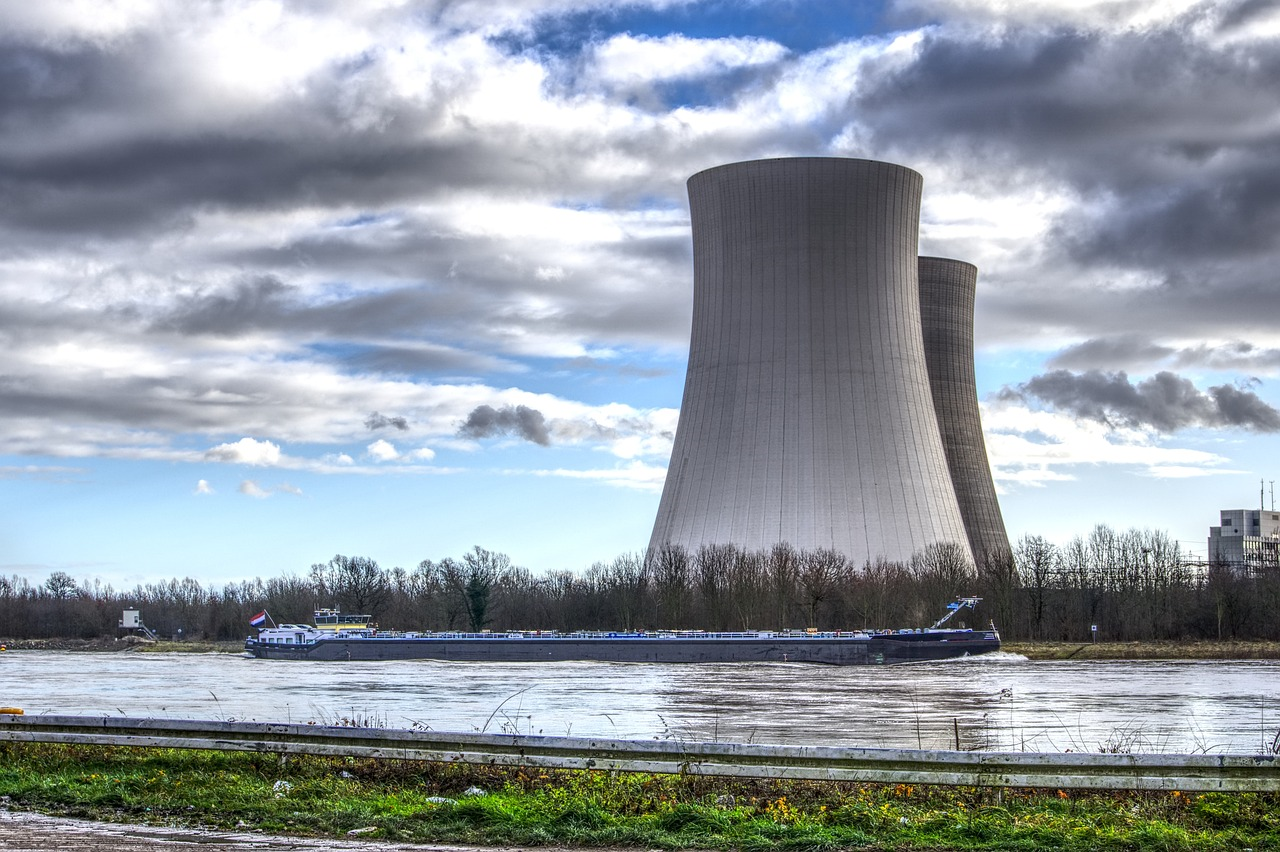Unit 18: Nuclear Energy
Unit 18: Nuclear Energy

Unit 18: Nuclear Energy

18: Nuclear Energy
Nuclear energy is energy in the core of an atom
Atoms are the tiny particles in the molecules that make up gases, liquids, and solids. Atoms themselves are made up of three particles called protons, neutrons, and electrons. An atom has a nucleus (or core) containing protons and neutrons, which is surrounded by electrons. Protons carry a positive electrical charge and electrons carry a negative electrical charge. Neutrons do not have an electrical charge. Enormous energy is present in the bonds that hold the nucleus together. This nuclear energy can be released when those bonds are broken. The bonds can be broken through nuclear fission, and this energy can be used to produce electricity.
In nuclear fission, atoms are split apart, which releases energy. All nuclear power plants use nuclear fission, and most nuclear power plants use uranium atoms. During nuclear fission, a neutron collides with a uranium atom and splits it, releasing a large amount of energy in the form of heat and radiation. More neutrons are also released when a uranium atom splits. These neutrons continue to collide other uranium atoms, and the process repeats itself over and over again. This process is called a nuclear chain reaction. This reaction is controlled in nuclear power plant reactors to produce a desired amount of heat.
Nuclear energy can also be released in nuclear fusion, where atoms are combined or fused together to form a larger atom. Fusion is the source of energy in the sun and stars. Nuclear fusion is the subject of ongoing research as a source of energy for heat and electricity generation, but whether or not it will be a commercially viable technology is not yet clear because of the difficulty in controlling a fusion reaction.
Nuclear fuel—uranium
Uranium is the fuel most widely used by nuclear plants for nuclear fission. Uranium is considered a nonrenewable energy source, even though it is a common metal found in rocks worldwide. Nuclear power plants use a certain kind of uranium, referred to as U-235, for fuel because its atoms are easily split apart. Although uranium is about 100 times more common than silver, U-235 is relatively rare.
Most U.S. uranium ore is mined in the western United States. Once uranium is mined, the U-235 must be extracted and processed before it can be used as a fuel.
Nuclear power comes from nuclear fission
Many power plants, including nuclear power plants, heat water to produce electricity. These power plants use steam from heated water to spin large turbines that generate electricity. Nuclear power plants use heat produced during nuclear fission to heat water.
In nuclear fission, atoms are split apart to form smaller atoms, releasing energy. Fission takes place inside the reactor of a nuclear power plant. At the center of the reactor is the core, which contains uranium fuel.
The uranium fuel is formed into ceramic pellets. Each ceramic pellet produces roughly the same amount of energy as 150 gallons of oil. These energy-rich pellets are stacked end to end in 12-foot metal fuel rods. A bundle of fuel rods, sometimes hundreds, is called a fuel assembly. A reactor core contains many fuel assemblies.
The heat produced during nuclear fission in the reactor core is used to boil water into steam, which turns the turbine blades. As the turbine blades turn, they drive generators that make electricity. Afterward, the steam is cooled back into water in a separate structure at the power plant called a cooling tower. The water can then be reused.
Nuclear power plants generate about 20% of U.S. electricity
The United States has 99 nuclear reactors at 61 operating nuclear power plants located in 30 states. Thirty-five of the plants have 2 or more reactors. Nuclear power has supplied about one-fifth of annual U.S. electricity since 1990.
The United States generates more nuclear power than any other country
Of the 31 countries in the world that have commercial nuclear power plants, the United States has the most nuclear capacity and generation. France has the second-highest nuclear electricity generation and obtains about 75% of its total electricity from nuclear energy. Fifteen other countries generate more than 20% of their electricity from nuclear power.
Vocabulary
Lesson Reading

